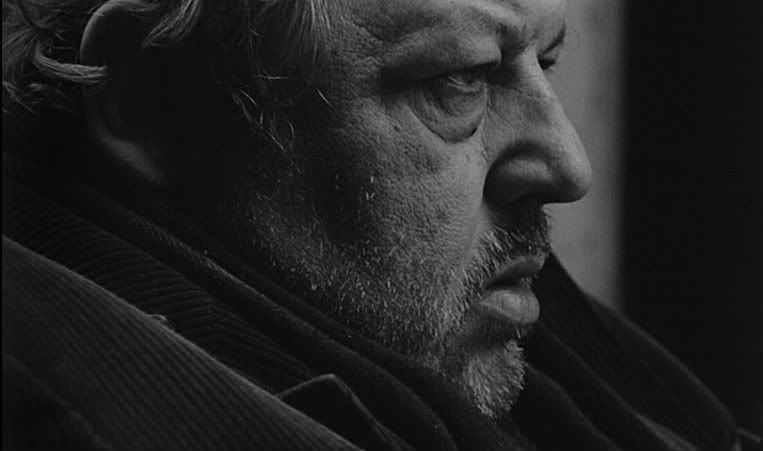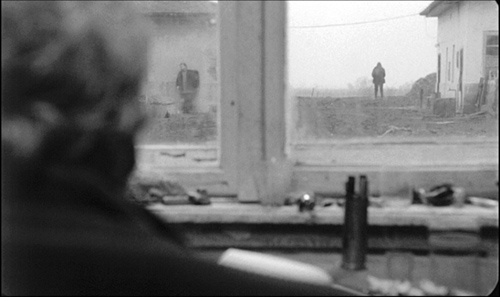

Looking back on
it now, I am struck with the mildly disconcerting consideration that I was
genuinely excited. I am not often ‘genuinely excited’ …not out of some mire of
emotional lethargy (although, occasionally: guilty) but due to that common
inability to match rational emotions to their situations…y’know, a supposedly
big or exciting event is tap-dancing on the horizon and yet, somehow, you feel
numb to its anticipation. Yes you might be able to rationalise or
intellectualise the notion that ‘I will enjoy it’ – or – ‘of course, that will
be fun’…but quite often, it’s hard to work up an earnest fervour of ‘looking
forward to things’. I realise this might sound more tragic than I intended. I
don’t mean it to be sad, I just think it’s a combination of getting a bit older
and being partial to introspection. Anyway, there I was, Saturday morning…and I
was, all things considered, pretty excited. I got up with enough time to make a
‘survival kit’ (pepparami, chocolate raisins, sandwiches, single can of red
bull) and was, as I said, ‘genuinely excited’….why? Because I was about to
experience a rare seven-hour screening of monumentally slow, black and white,
deeply anguished Hungarian cinema: Sátántangó.
That I should be so excited over this Everest of Cinephilia makes me feel as
though I should reflect…on life priorities, this spiralling enthusiasm for dark
rooms and solitude, on my sparked emotional connection with that which is
divorced from actual experience…but then, meh – who doesn’t love a slice of
miserabilist slow cinema!? Am I right?




Doesn’t matter, don’t care, bought the
ticket (that’s right, single ticket…hard to convince folk that a seven hour
film about an impoverished community of farmers is a viable way to spend, nay,
even enjoy, a Saturday). So, off I marched to Tyneside cinema, my intolerably
‘cool’ lunch for one, placed inside my equally ‘cool’ backpack, clutching that
lone ticket to guaranteed existential torment. Having hopefully given a
sufficient insight into my misaligned joys and questionable priorities in this,
our strange and waking life, I shall cast off my wanky and preposterous
tone…and try and talk a little bit about Béla Tarr’s 1994 epic film, Sátántangó.

If it is famous (or infamous) for
anything, it is the extreme length of the film (450 minutes, the cinema showed
it with two intermissions) and its deployment of long shots, often lasting up
to just over ten minutes. It is based on the novel of the same name, by László Krasznahorkai, and follows the
overlapping stories of a community led out out of their isolated village with
the promise of new work and redemption with a communal farm. The film opens
with an eight-minute shot, from complete stasis to tracking observation, which
follows a herd of cows emerging from derelict and cavernous stables. Here we
are introduced to some of the primary elements of the film’s crushingly bleak
constitution: mud, silence, desolate landscapes, crumbling buildings, and the
heavy presence, texture and inevitability of time. Uttering a phrase like
‘texture of time’ requires a certain amount of explanatory footwork to avoid
(what would be) justified accusations of my own floundering, pseudo
metaphysics. 

So…the long takes vary between: studied close ups of weathered
faces…lingering on the contours of each tired brow, until we feel as though we
can begin to read character through the worn material of its flesh – staring at
the face as a landscape; long shots of disintegrating architecture, empty
rooms, cracked walls – the spaces that people have just left and yet seem
expressivist in their battered collapse; shots that emphasise a tedium of
banality, nothing of remarkable interest is happening – maybe rain on a window
(although this often becomes hypnotic), maybe an empty room, or maybe a man eating,
pissing or staring…this is the dull, unavoidable everything that is the film’s
aching ‘nothing’ (at one point a character remarks ‘nothing comes to
nothing’)…the heaviness of time, real time as it unfolds as its own event;
walking shots, following men walking down a deserted city street, swirling
leaves and torn debris gusting past their trudging path…an expressionless face,
staring ahead, bobbing up and down with the stepping of uneven land, walking,
stumbling, falling, walking, dragging, striding, walking, walking on and on and
on; then there are the slow, barely perceptible - in their inching advance
- zooms, that with glacial drift ,move
in and out of whatever is, or is not, happening.

Unlike the
slowness in Tarkovsky, where there is a sense of cumulative and transcendental
meaning, these shots instead feel oppressively bare, human and alone. In
Tarkovsky’s Mirror, or the majestic
journey of Stalker , boredom leans into
a more profound attention; landscapes, light and movement become powerfully, if
inexplicably, mysterious and spiritual. With Sátántangó however, the effect is one of mounting
isolation and an unremittingly grim sense of abandonment: we are here alone, struggling
in the mud, walking forward, always trying to get up, to move, to keep walking
on…somewhere… I put down my chocolate raisins – this was not a chocolate
raisins film. The excitable anticipation had appropriately dissolved into a
kind of mesmeric doom and tedium, I was feeling exhausted. 

SPOILERS
:Due to its length and the intermissions taken, the film often felt like woven
vignettes (that temporally followed the forward and back steps of the tango)
and yet there were clearly scenes and particular strands that were more
unforgettable and more arresting than the mire and space which surrounded them.
Perhaps the most upsetting thread in the narrative was that of a young girl who
tortures her own cat (“I am stronger than you, I can do what I want to you”) to
death, and then is shown wandering listlessly through torrential rain, over
hills and across endless mud, all the while holding the stiffened corpse of her
cat…before finally SPOILER lying
down beside a ruined chapel shrouded in fog, her dead cat beside her small
form as she takes out the rat poison (with which the cat was killed) and takes it
herself. Closing her eyes and holding the contorted and cold body of the cat she killed
– this is her peace, her sleep and her end. By now, the Saturday excitement was
somewhat waning and I was well and truly committed to the draining sadness of
this trudging opus. Thing is, depending on how you decide to view it, Bela
Tarr’s bleak fascination and interrogation with human struggle can be both
gut-wrenchingly serious - or – blackly,
blackly comedic…in the vein of Beckett – but with more mud and realism…and
silence.

As the girl tumbles on the ground,
her cat choked by its scruff to be thrown this way and that – before being
grotesquely hung up and abandoned in a tied rope bag, it becomes depressingly
clear that this is a pivotal image. The girl, so hopelessly devoid of any real
agency or control in shaping the hard life that awaits her, finds solace in the
cruel exertion of a relative power…torturing the cat. The villagers can only
reach moments of joy or transcendence through lots and lots of alcohol…a great
sequence, in which a suitably depressing bar is filled with the (sparse)
village in its tiny population, reaches heights of repetitive bliss and
hilarity…the music, combined with their drunken dancing and the camera’s looped
and slow movement, create an immersive and uniquely mantric kind of cinema.
We begin with wandering cattle and
end with a man boarding up his window, until, with laborious inevitability, the
screen is hammered, nail-by-nail into black.
There is so much in this film and at seven hours you cannot but ‘live’
it; whether sinking into its gloomy treacle with an absurdist smile at the
human condition, or weighed into its earth with an unflinching stare at the
weight and wait of time…it is
undeniably like nothing else ever made, seen or experienced. I wouldn’t
recommend it with the same vigour that led Susan Sontag to see it 15 times, nor
would I say I enjoyed it, but I would like to see it again…after seeing it,
living through seven hours in the harsh rain and home grown Hungarian
emptiness, there is an irresistible and reciprocal manner in which the places
and the people live on, in an often physical and exasperating way, after the
film has ended…it is not seeing a film, as we are used to, it is – as Béla Tarr
wanted – an experience in which its meaning and experience is constantly and
tiringly co-created. You cannot watch it without feeling involved as part of
it, and for all the existential upset it harbours, that is a Saturday well
spent.
